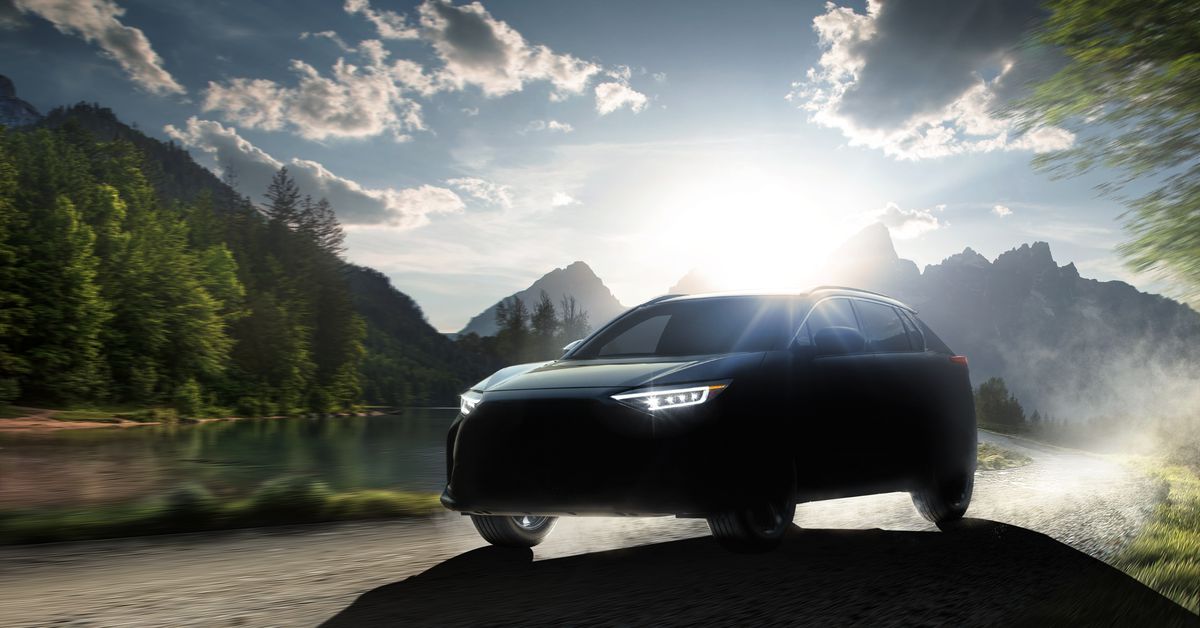
Subaru has released a pair of teaser images of its first electric car, which will be called the Solterra EV. Coming to the US, Canada, Europe, and Japan in 2022, it will be powered by the electric vehicle platform that Subaru has been co-developing with fellow Japanese automaker Toyota.
In true teaser fashion, the images don’t show off too much. One, which appears to be more of a rendering than an actual photograph, reveals that the EV will… roughly look similar to Subaru’s other SUVs, though it seems to be on the smaller side. The other is a close-up of the rear badge, with a subtle splash of mud as a nod toward Subaru’s outdoorsy bona fides.
That’s basically all Subaru is saying for now, though. No pricing, no specs, and no information about whether Subaru will use the Solterra as a chance to refresh the way it designs its vehicle interiors (as many other automakers have with their first electric vehicles). Pretty much the only other detail Subaru shared is that the name “was created using the Latin words for ‘Sun’ and ‘Earth’ to represent Subaru’s commitment to deliver traditional SUV capabilities in an environmentally responsible package” — which, as far as corporate naming conventions go, is kind of refreshingly harmonic, even for Subaru.
Solterra is certainly more pleasing to the eyes than “BZ4X,” which is the name of the first SUV Toyota will build on this shared platform with Subaru. The BZ4X is also due out in 2022 and will be built on this shared platform, which Toyota calls the e-TNGA and Subaru calls e-Subaru (which is not so harmonic). The companies have said that the vehicles built on this platform will benefit from Subaru’s experience with making really good all-wheel drive systems and Toyota’s years of developing battery tech for its hybrids.
As thin as the press release is, being able to talk about Subaru’s first EV never felt like a total given. Along with Toyota, Subaru has avoided making a splashy or expensive transition to electric vehicles during a time when most every other automaker took the leap. The company’s slow approach has, at best, seemed like a sober read of the current market and, at worst, seemed out of touch — like when it advertised its all-wheel drive technology as a “great opportunity to cope with recent climate change” in a since-deleted press release.
